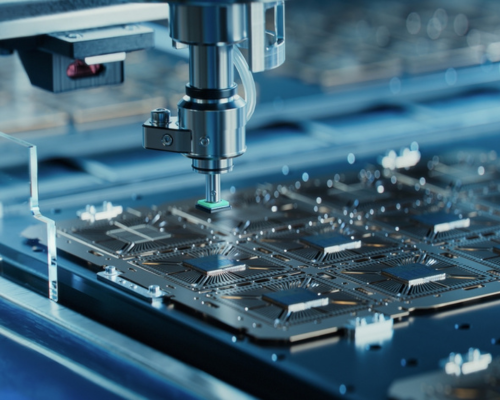
How to Extend the Lifespan of Your Air Compressor
October 23, 2024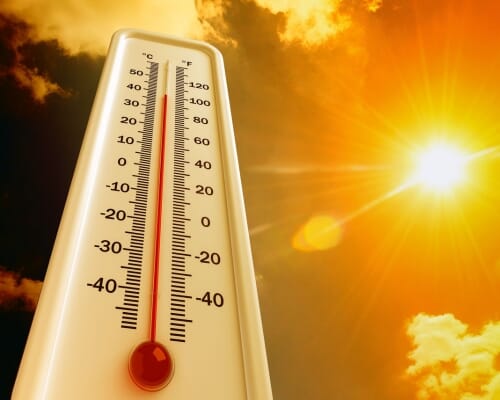
The Impact of Temperature on Air Compressor Efficiency
November 6, 2024Signs Your Air Compressor Needs Repair or Replacement
Kaishan USA | October 16, 2024| Uncategorized
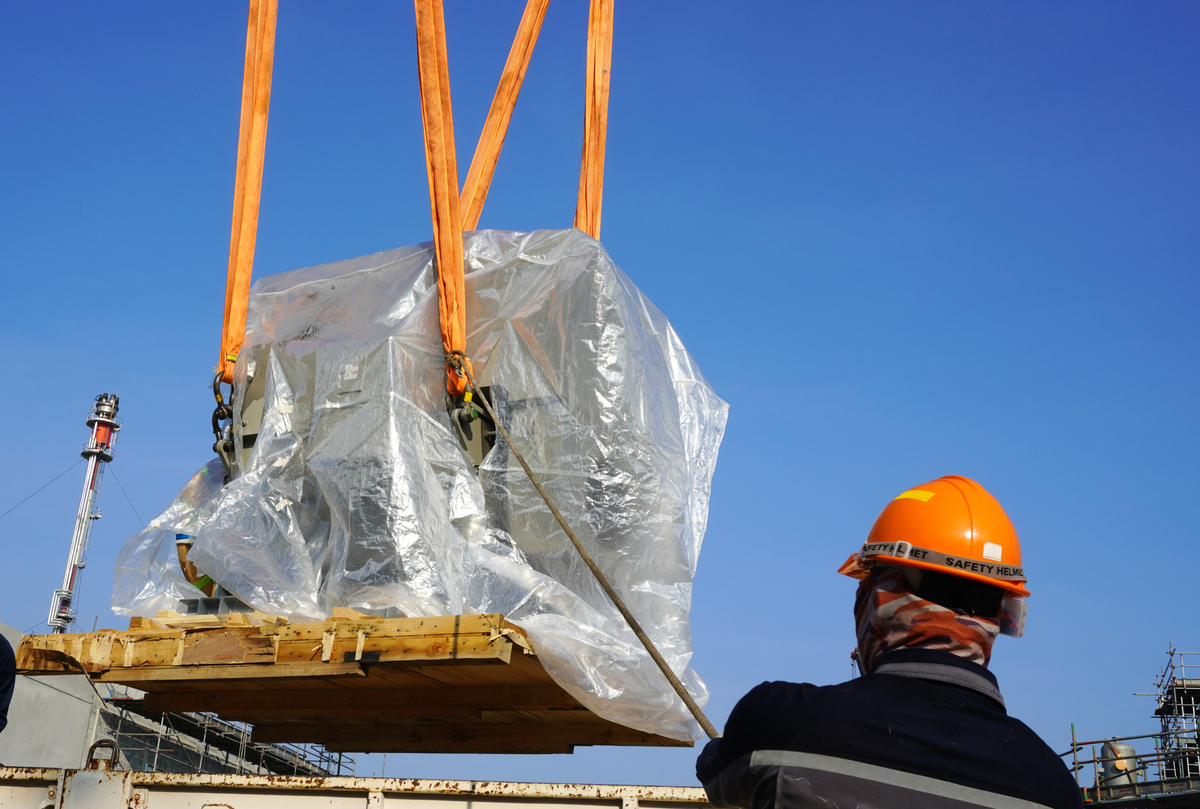
If you need to cut holes in your roof or remove a side wall to install a new unit, air compressor repair may be your best alternative.
Deciding whether to repair or replace an existing air compressor is one of the toughest decisions a facility or plant manager must make. There are a host of issues to consider, including technical, financial and logistical concerns.
Unfortunately, there’s no quick answer or blanket statement we can give you about whether to repair or replace an existing compressor.
Let’s talk about this critical decision in a little more detail. First, the reasons to repair.
Clear Reasons for Air Compressor Repair
Even if your unit is relatively new, things can still go wrong. It’s not unusual for new equipment to experience minor glitches.

If your compressor’s problem can be remedied with a quick fix, a repair is probably worth it. Especially if your equipment is current and hasn’t broken down before.
When a rotary screw compressor is less than five years old, you’re almost always going to fix it, as long as the parts you need are readily accessible. Even if it’s an expensive repair.
And age is not always a deciding factor. We’ve seen compressors that were installed 20 years ago but still flourishing, looking like they were no more than five years old.
Logistical Challenges
Even if a rotary screw air compressor is 10 or 20 years old, you may want to fix it because replacement would be difficult.
Maybe your operation grew as your compressor remained in place. And you’d need to remove a wall or cut a hole in the roof to get it out. Even a crane or helicopter. And then there are the hidden costs—piping and electrical connections may not be in the same place. You may have conduit coming underground through a cement pad.
We had one situation where several compressors were squeezed into a very tight room. Not surprisingly, the one that needed to be replaced was at the back of the room—it was the oldest and had been installed first. So we had to haul the other compressors out of the room, stage them on the factory floor nearby and install temporary connections to get them working again.
Finally, we removed and replaced the bad unit, then reversed the process, placing the new compressor in the back of the room and putting the other compressors back into the space. A job that usually took a day or two required six.
So, it’s not out of the question to have installation costs exceed the price tag for the air compressor, the tanks and the dryer.
Obvious Reasons to Replace
The reasons to replace your compressor are straightforward, mostly involving your equipment’s age and technical limitations.
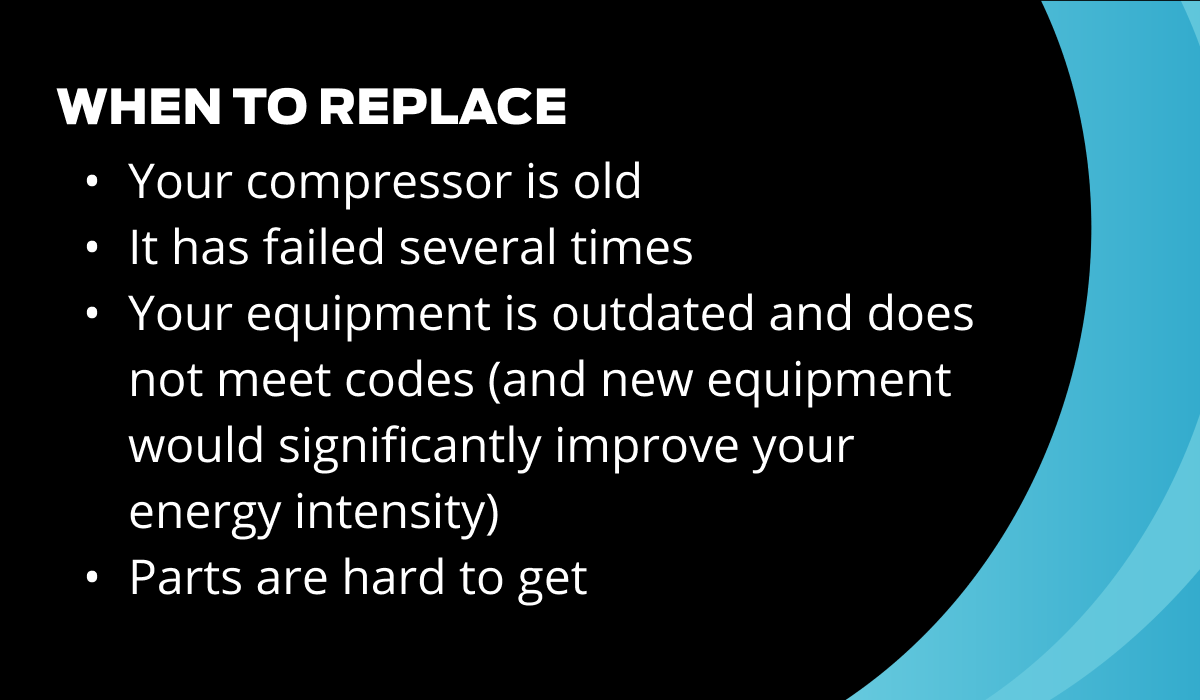
Your Unit Is Several Years Old and out of the Manufacturer's Warranty Coverage
If your equipment is nearing the end of its rated service life and you’re looking at a costly repair—requiring a new airend, VSD or motor, for instance—a replacement may make sense.
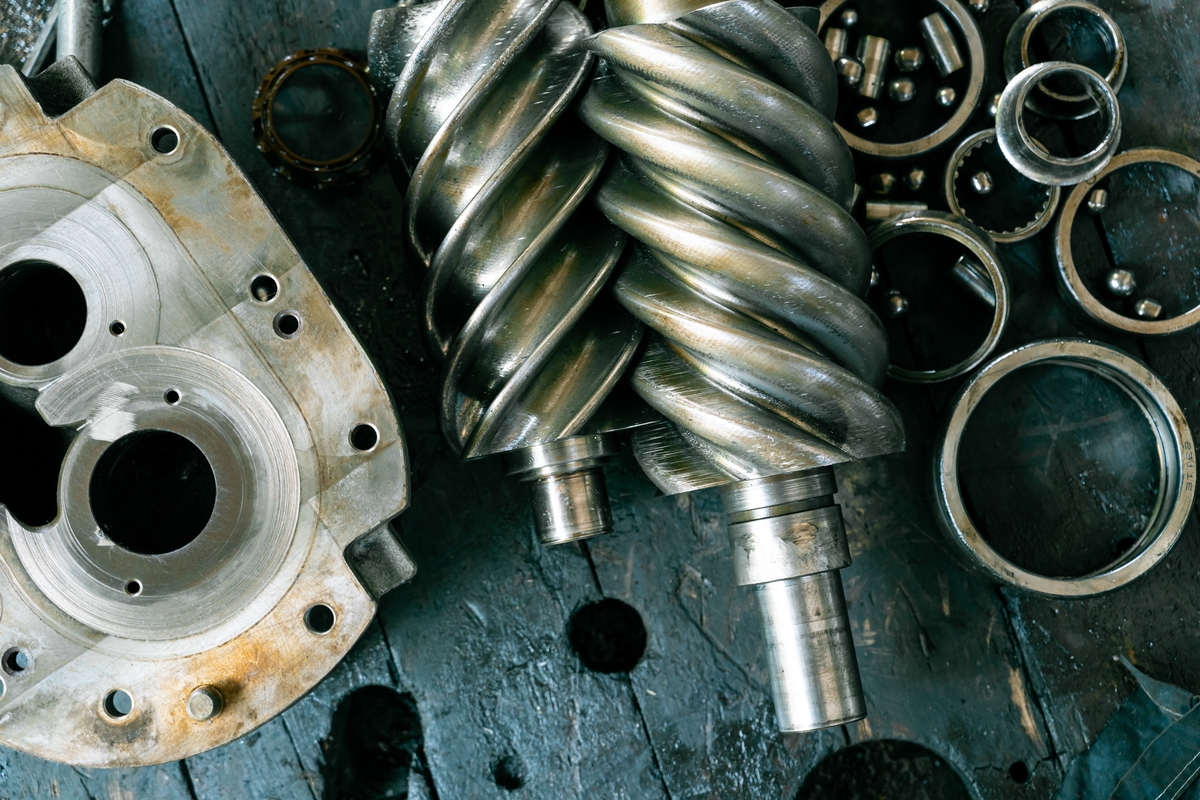
If an air compressor repair involves a costly component, like a new airend, VSD or motor, a replacement probably is in order.
The Equipment Has Failed Several Times
The age of your compressor or the specific cause of failure may not really matter. Downtime makes everyone impatient. If your compressor has forced you to shut down your plant several times, you may already have lost more than a replacement would cost.
A side-by-side comparison of costs might help you make the repair/replace decision and sell your recommendation to top management. If you don’t have a payback calculator, your air compressor consultant or independent Kaishan distributor can help you develop one.
Equipment Is Outdated and Not Up to Current Energy Efficiency Standards
Manufacturers are constantly working to improve the efficiency of their products, so the older your air compressor, the more energy savings you will get from a replacement. The energy savings alone almost always tip the scale in favor of a new unit.
An inefficient unit could easily waste more on added electrical costs than you would pay for a replacement. As a result, it’s essential to find out if new technology is available that would produce operational savings shortening your payback period.
Remember, electricity makes up 76% of a compressor’s total cost of ownership, according to the U.S. Department of Energy. Meanwhile, the initial expense to acquire and install the equipment is 12%.
Replacement Parts Are Hard to Get
Admittedly, most manufacturers aren’t always the best at stocking replacement parts, and many stop producing components for aging systems. The longer you hold onto an older compressor, the more difficulty you will have in finding replacement parts. And then there’s the wait for parts that need to travel halfway around the world.
Kaishan prides itself on after-sales support and having the parts you need available when you need them. That’s one reason Kaishan works with a network of independent distributors. These companies have built their businesses by stocking what their customers need. Especially, replacement parts, among other things.
Other Things to Consider
Beyond the typical age and repair history issues, there are several other factors you need to consider in the repair vs. replace decision.
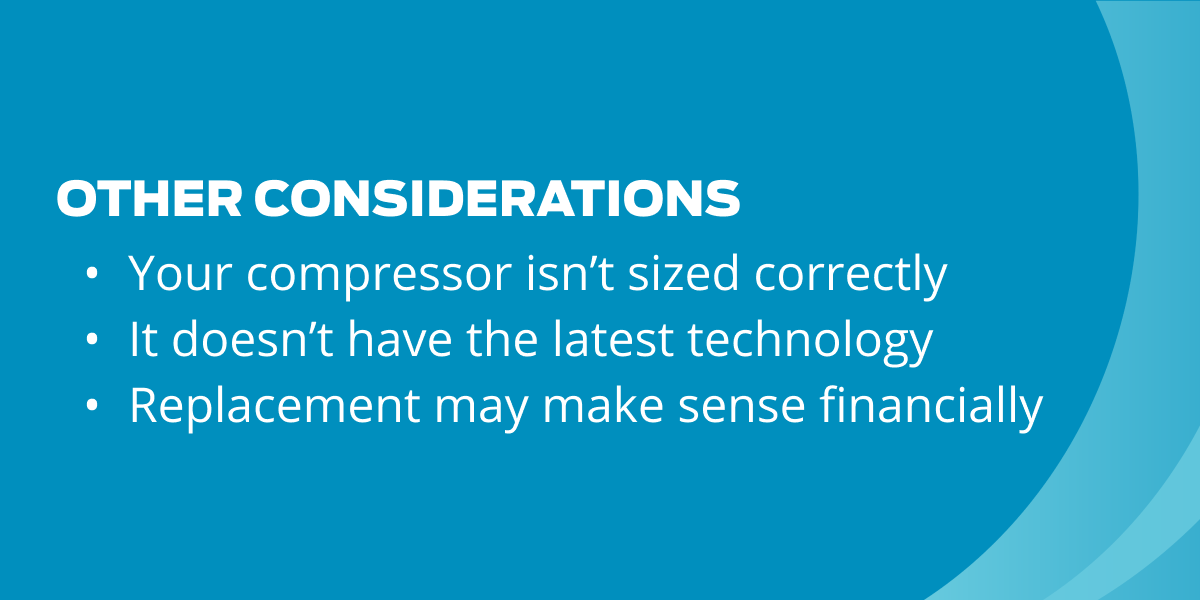
Your Compressor Isn’t Sized Correctly
Everyone changes their equipment lineup. Sometimes monthly or more. So, your equipment may not be sized correctly for your application.
- If it’s undersized. You may have added several new pieces of equipment or new tools driven by compressed air. Or your compressor was undersized from the beginning. No matter the cause, the overuse—and breakdowns—will only continue. Unless you’re planning to downsize, it’s wise to recognize that you’ve outgrown your current equipment and scale up to a unit with higher capacity. The good news? All may not be lost. Your existing compressor might still have a role as a backup or even as a trim unit.
- If it’s the opposite (oversizing). Your compressor may have been sized with “room to grow” or purchased to handle end uses that have since been removed from the system. It may seem counterintuitive, but with air compressors, “too much” is almost as bad as “not enough,” wasting energy, reducing equipment lifetime and requiring more maintenance.
- Or too much of a good thing. You updated an older, inefficient compressor with a new, high-efficiency model. However, because your new machine outputs more flow (cubic feet per minute, or CFM) per horsepower, it’s oversized. If you have several compressors, you may want to remove one or take it offline.
For more on the ins and outs of sizing, read our post, “Everything You Need To Know About Sizing Industrial Air Compressors for Manufacturing.” Or download our white paper, “Demystifying Air Compressor Sizing.”

While most companies prefer to repair rather than replace an ailing air compressor, most never look back when their new unit is in place, like this installation at Factory Finish Smart Repair in Cape Coral, FL. According to the owner, the old unit “literally went kaboom.”
It Doesn’t Have the Latest Technology
Technology has changed drastically in the last decade or so. An older compressor could well be a belt-drive model, requiring belt replacements. It may not have the high-efficiency motors today’s compressors have. It might not have been manufactured with the tight tolerances we achieve with today’s units. It may have an older-style, direct full-voltage online starter that consumes a lot of power during startup, incurring peak electricity charges from your utility.
And it probably won’t have variable-speed drive technology, which has produced significant savings in some applications. (Find out about the pros and cons of VSDs in our blog post, “How Variable Speed Drive (VSD) Rotary Screw Air Compressors Save You Money”.
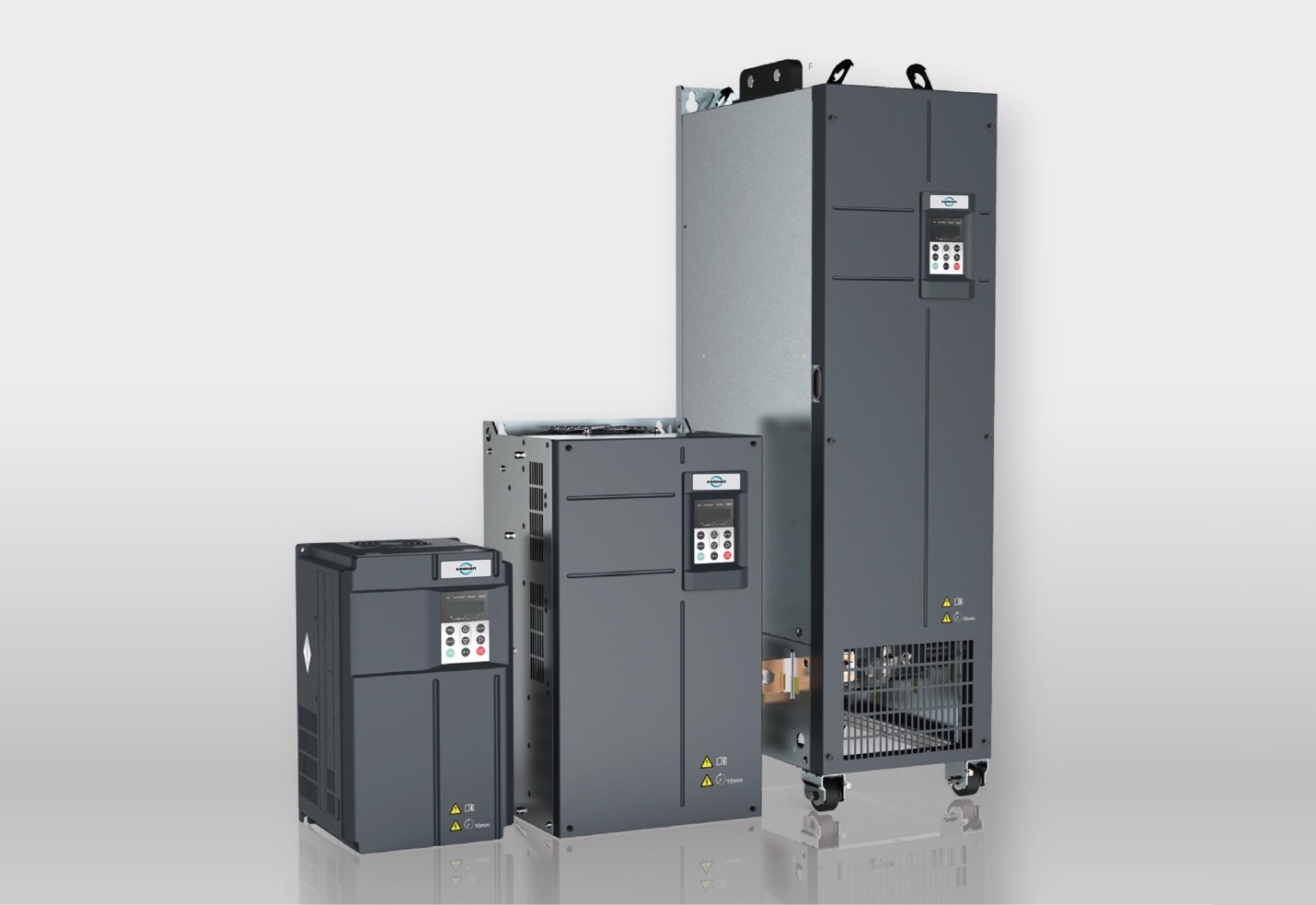
An older compressor probably won’t have variable-speed drive technology, which has produced significant savings in some applications.
As mentioned, the older your air compressor, the more energy savings you will get from a replacement.
Replacement May Make Sense Financially
Even if your existing compressor is functioning well, your finance department may decide that your company is in a good position to make a capital expenditure. Or the purchase could allow it to depreciate the outlay, especially if they’ve already depreciated the existing unit completely. If the cost is significant—like the 60% typical cost of replacing an airend, replacement is clearly the way to go.
A Wakeup Call?
If you choose not to replace your unit, you still should probably view the problems you are experiencing as a wakeup call that you need to make some changes. If you’re experiencing air compressor overheating or if your air compressor is not building pressure, for instance, you should probably look deeper.
If you know what caused problems your compressor was experiencing and have remedied them, great. But, if not, it may be an excellent opportunity to recalibrate or fine-tune your compressor to get it fully optimized for your application. If that is the case, you probably will want to touch base with a local compressed air professional.
That’s a good idea whether you’re repairing or replacing your compressor.
Local Help in Making the Call
We find most companies will benefit from seeking outside help in weighing all the technical, financial and logistical factors that impact the repair/replace decision.
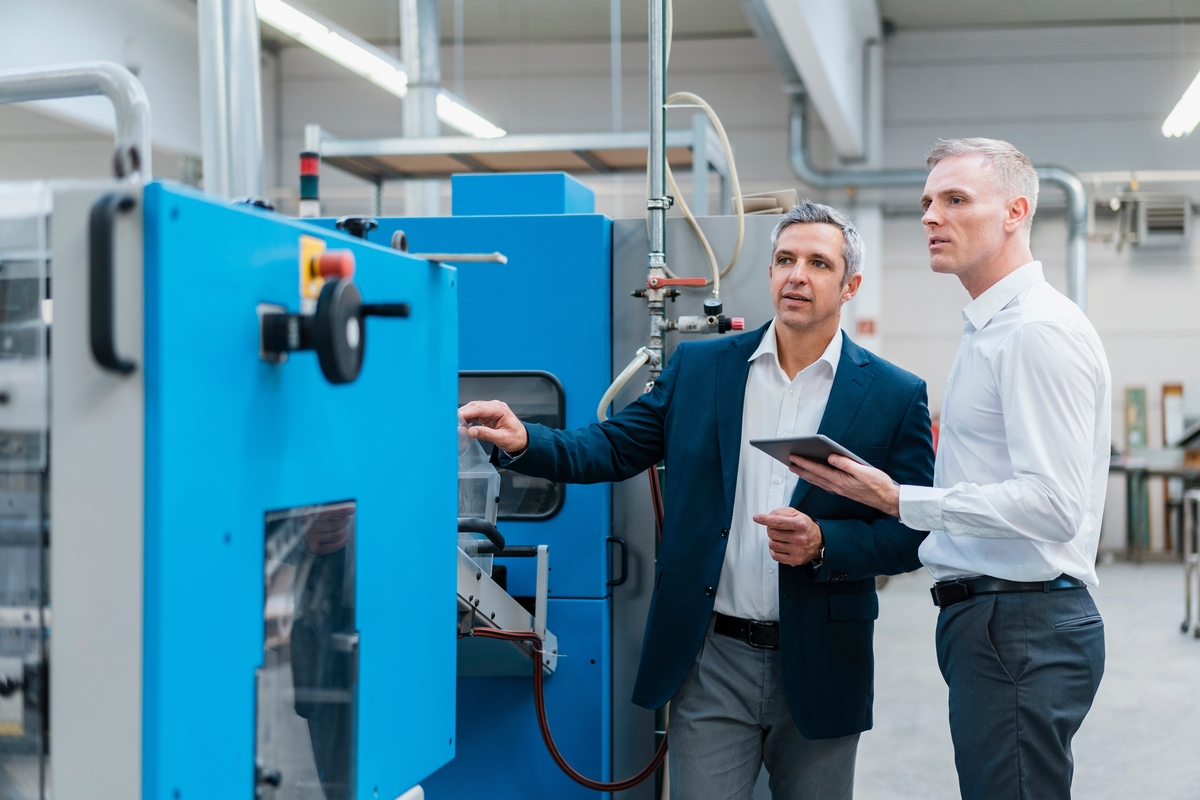
Your air compressor professional is your best resource for air compressor troubleshooting, especially in helping you decide whether a repair or a replacement is the most effective solution.
We encourage our customers to develop strong relationships with their local compressed air consultants. Kaishan USA works with a nationwide network of independent distributors, who can provide on-site help and consultation as needed. They can help you determine the best way forward.
Key Takeaways
- Heat is the sworn enemy of an air compressor, shortening equipment life, increasing costs and causing poor air quality.
- Deciding whether to repair or replace an existing air compressor is one of the toughest decisions you must make.
- If your compressor’s problem can be remedied with a quick fix, an air compressor repair is probably worth it.
- If your equipment is nearing the end of its rated service life and you’re looking at a costly repair, a replacement may make sense.
- Manufacturers are constantly working to improve the efficiency of their products, so the older your air compressor, the more energy savings you will get from a replacement.
- If your equipment is not sized correctly for your application, a replacement is probably the best choice.
- Even if you choose not to replace your unit, you may want to view the problems you are experiencing as a wake-up call.
Let Us Help
Making the decision to repair or replace your rotary screw air compressor will have a significant impact on the operation of your compressed air system and all the processes that rely on that system. If you need help deciding what to do, get in touch with the experts at Kaishan. Contact us today.
Random stat or
customer quote
textXXtext
text

